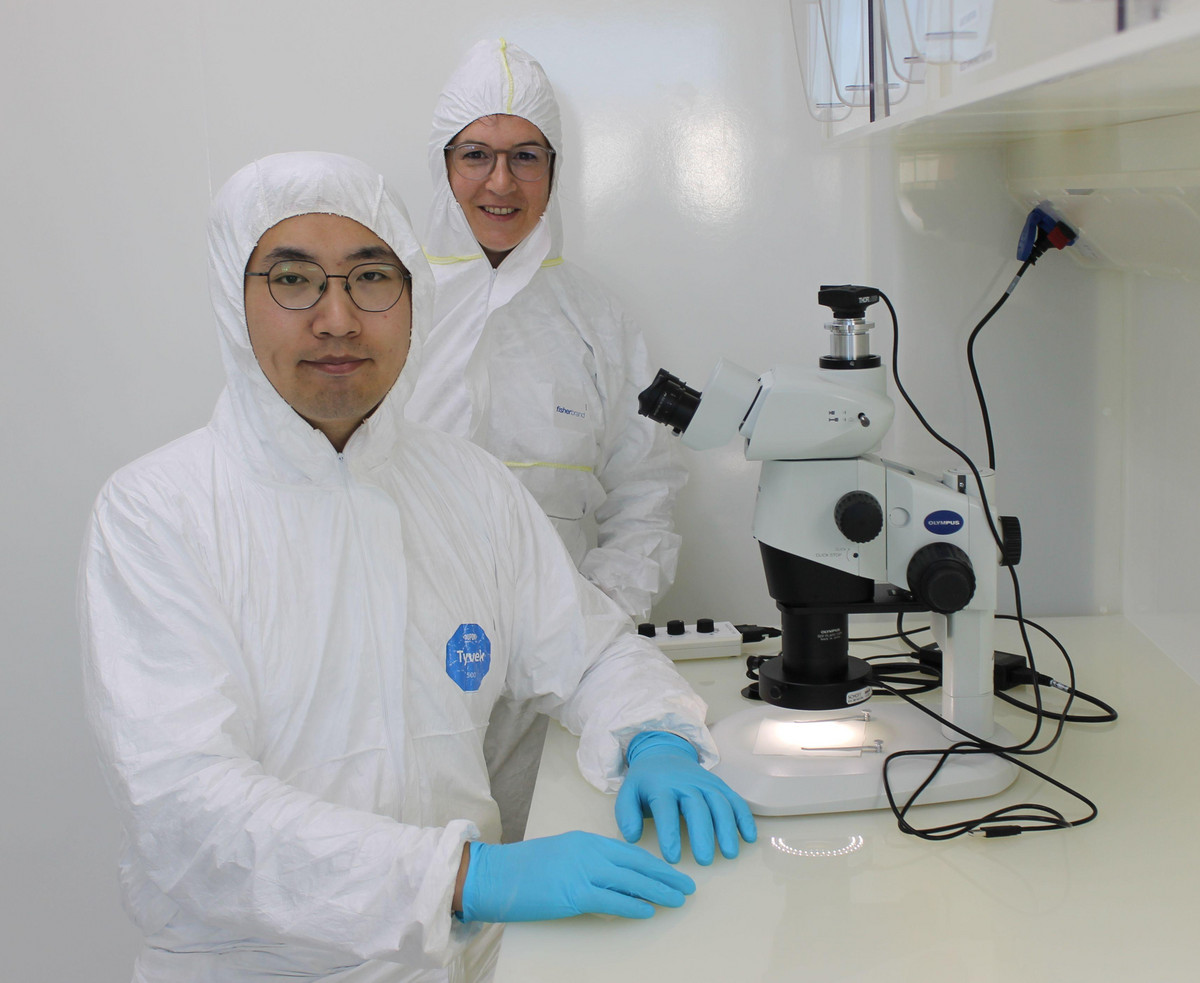From outer space to the Nuremberg Metropolitan Region: University of Bayreuth examines Moon rocks
The Bavarian Research Institute of Experimental Geochemistry and Geophysics at the University of Bayreuth investigates lunar rocks with high-tech mass spectrometric methods, thus offering insights into the formation of the Earth.
They were formed on the Moon more than three billion years ago, brought back to the Earth about 50 years ago, and recently arrived on the campus of the University of Bayreuth: samples of Moon rocks collected by NASA Apollo missions 16 and 17. The US national space agency has made them available to the Bavarian Research Institute of Experimental Geochemistry and Geophysics (BGI) of the University of Bayreuth for scientific investigations.
Under the direction of Prof. Dr. Audrey Bouvier, an internationally renowned expert on extraterrestrial rocks, the lunar samples will be analyzed in the coming years for their chemical composition using high-tech mass spectrometry methods. For these investigations, BGI not only has the latest research technologies at its disposal, but also special cleanrooms that ensure that the lunar rocks are not altered under the influence of dust or moisture. The rock samples supplied by NASA are small chips and polished thin slices the size of a thumbprint for detailed high-spatial-resolution analyses. The Apollo 16 and 17 astronauts collected a large portion of these samples using the battery-powered Lunar Roving Vehicle, which allowed them to make excursions around the landing site.
Insights into the history of the Earth
Analyses of lunar rocks are not only informative for the study of the origin of the Moon, but also offer insights into the formation and early impact history of the Earth. Previous studies have already shown that the formation of the Earth in its present form and the formation of its satellite were closely linked by a giant impact. But while all rocks on the Earth's surface were subject to constant changes due to plate tectonics and the influence of climate, weathering, and other geological processes, the lunar rocks remained largely preserved. To this day, it closely resembles the rock as it formed more than three billion years ago soon after the Moon was formed.
"Investigations of particular lunar rocks, which are called impact breccias, allow us to travel back in time: they show us what the Earth was once like. They preserve the records of the intense planetary bombardment that took place on the lunar surface, and hence by analogy on the Earth. These findings are particularly interesting because they allow us to draw conclusions about the chemical and physical conditions under which life on Earth arose ca 3.7 billion years ago. Isotope analyses, which we can perform here at BGI using research technologies that did not even exist at the time of the Apollo missions, are particularly valuable in this regard," says Prof. Dr. Audrey Bouvier, Professor of Experimental Planetology at the University of Bayreuth.
The research team she leads at BGI also includes Mr. Ran Zhao M.Sc. He graduated from the University of Bayreuth with a master's degree in "Experimental Geosciences" and is now participating in the analyses of the rock samples as part of his doctoral thesis. The studies will also include analyses of lunar rocks that have impacted the Earth as meteorites. Lunar meteorites provide a random sampling of other locations on the lunar surface. However, their chemical and physical properties are not as pristine as the rocks can be modified during their entry into the Earth's atmosphere and the weathering conditions on Earth for the last tens of thousands of years until their recovery in the Sahara Desert.
In preparation: analyses of the rocks of a Martian moon
Prof. Dr. Audrey Bouvier was recently selected by the European Space Agency ESA as a European member of one of the "Science Strategy Teams" involved in the upcoming Japanese-led Martian Moons Exploration (MMX) space mission. A spacecraft from the Japanese space agency JAXA will launch toward Mars in the fall of 2024 to closely observe the two Martian moons Phobos and Deimos and collect at least 10 grams of rocks from Phobos’ surface regolith. The rock samples are scheduled to arrive back on Earth in 2029, but international strategy teams are already preparing for the rock analyses. JAXA will provide some of the samples to BGI. Here, Prof. Bouvier's team is primarily concerned with the question of what knowledge can be gained from analyses of Martian moon rocks with regard to the formation of the early Solar System and the terrestrial planets.
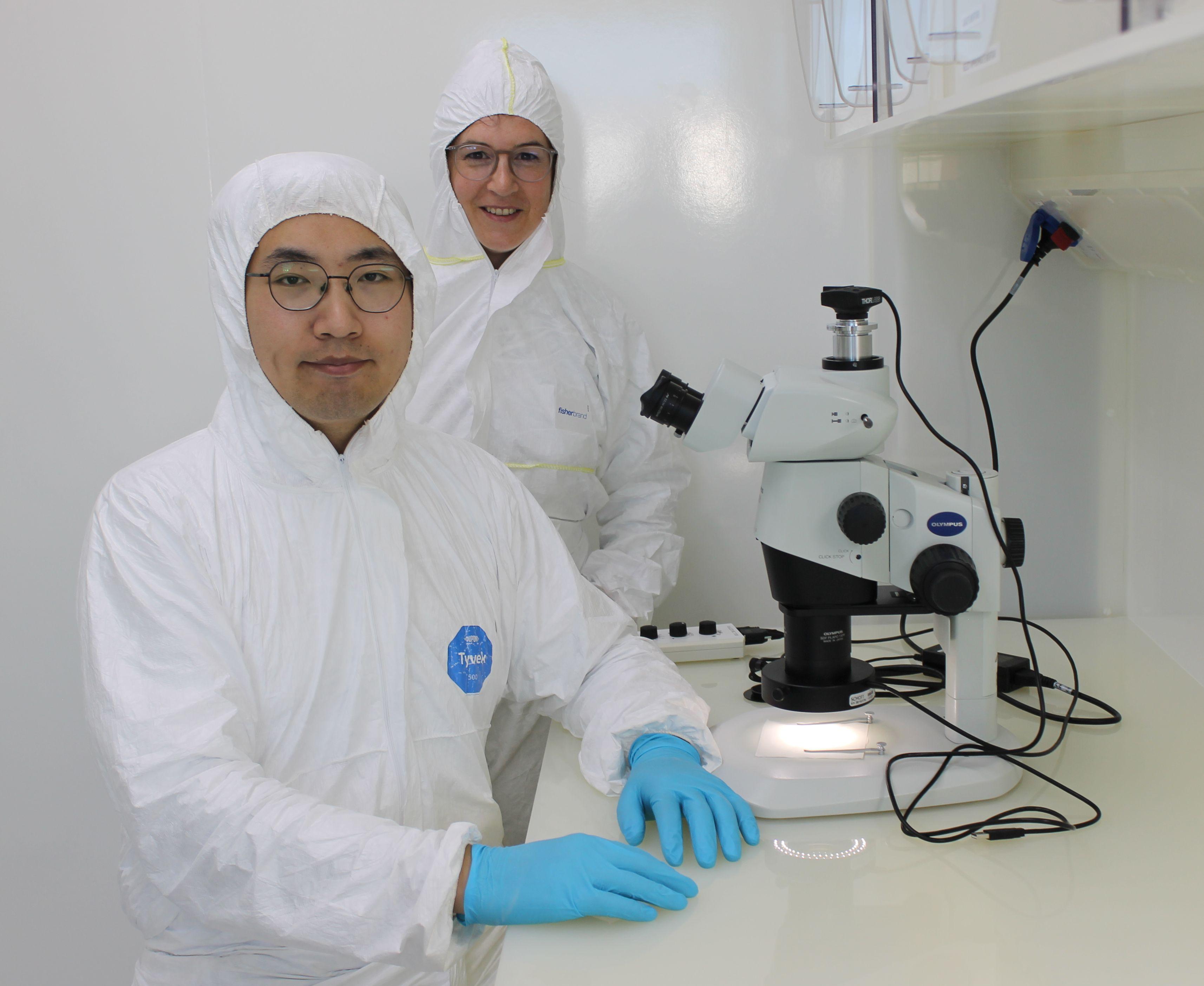
Ran Zhao M.Sc. and Prof. Dr. Audrey Bouvier (from left) in a cleanroom laboratory of the BGI in preparation for the investigation of extraterrestrial rocks. © UBT / Chr. Wißler.
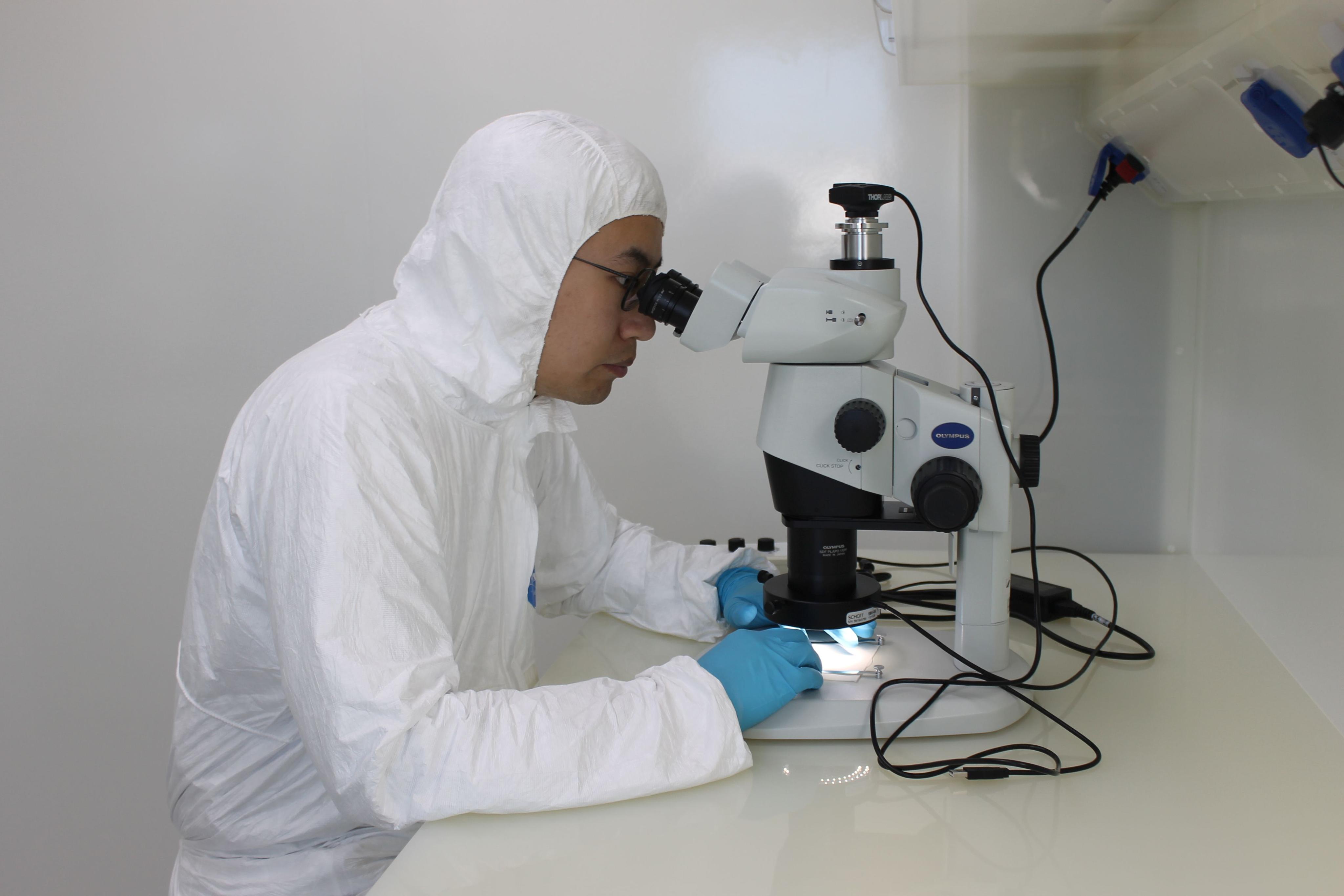
Ran Zhao M.Sc., doctoral student at BGI, takes a first look at the lunar rocks. © UBT / Chr. Wißler.
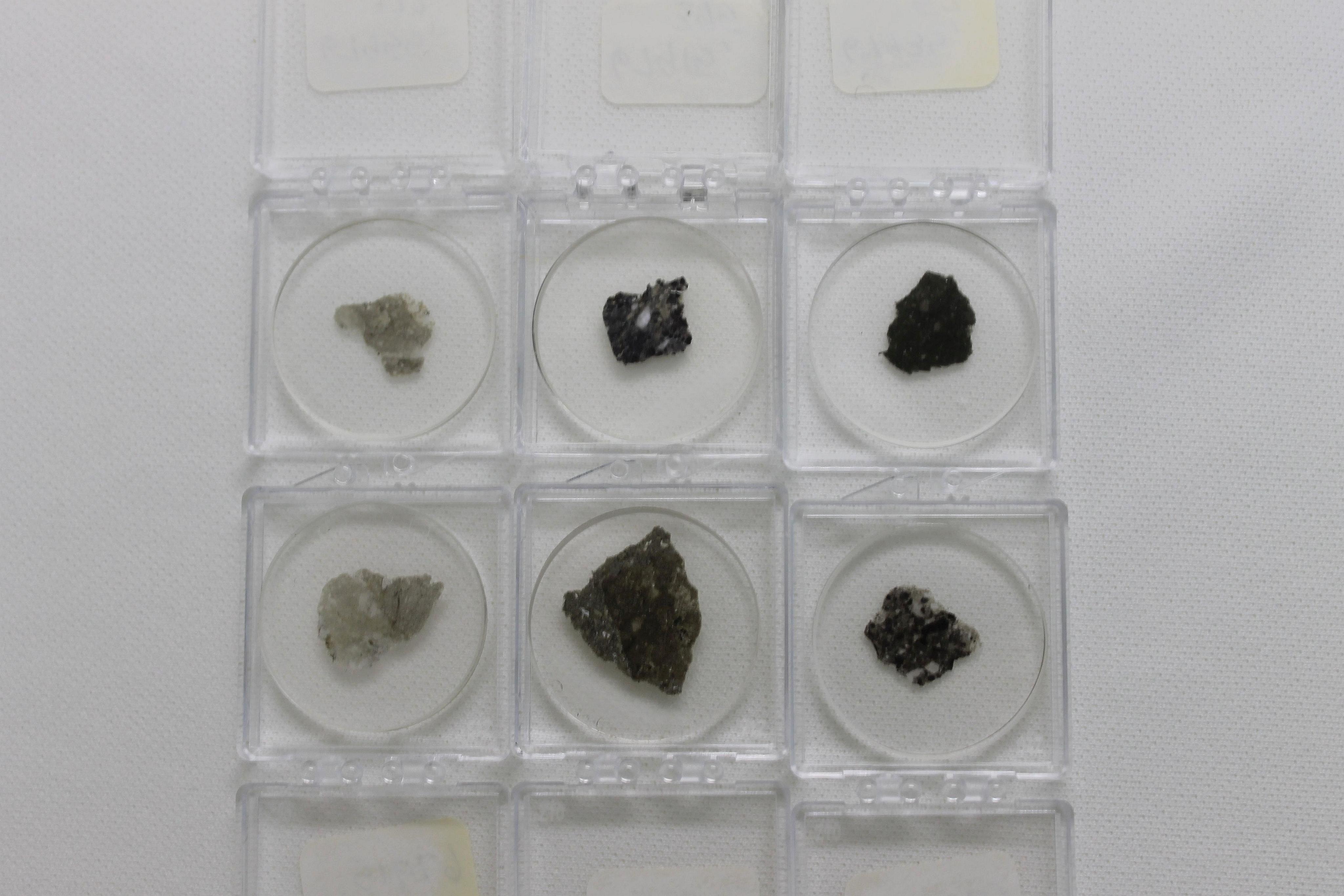
Polished sections of the lunar rock samples from Apollo missions 16 and 17 at the Bavarian Research Institute of Experimental Geochemistry and Geophysics (BGI). The round sections are 1-inch diameter. © UBT / Chr. Wißler.
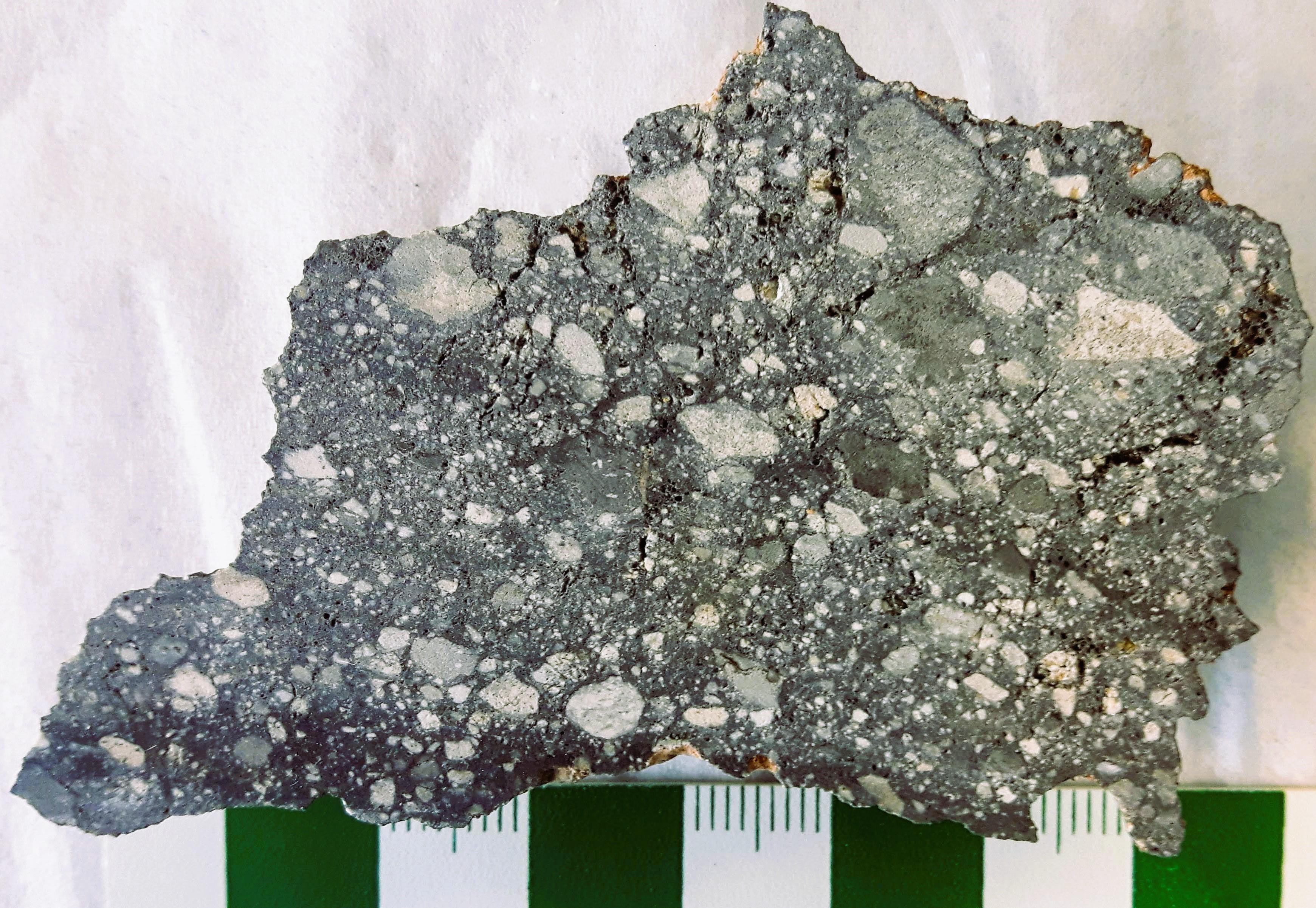
A slice of a lunar impact breccia meteorite that hit the Sahara Desert about 26,000 years ago. © A. Bouvier.


